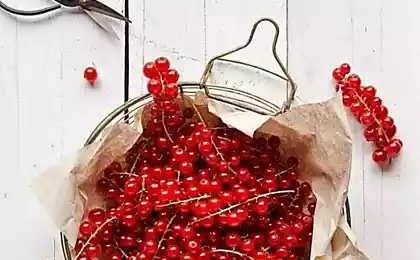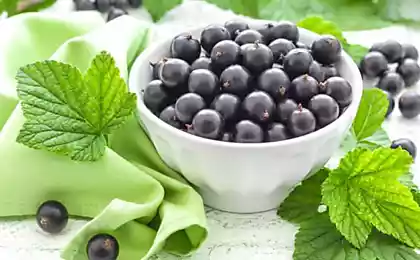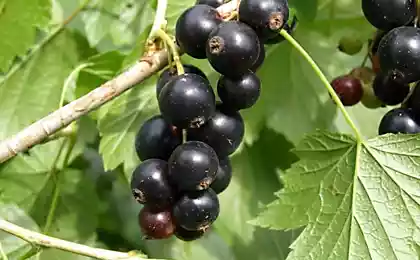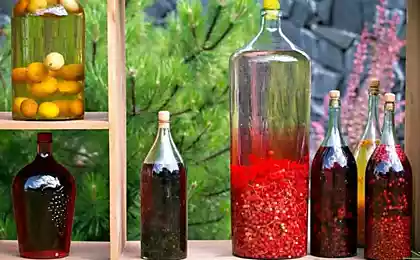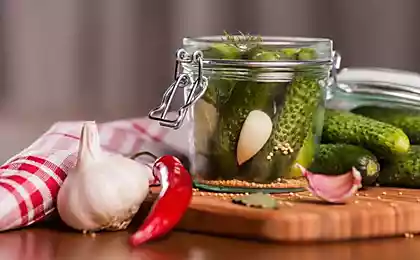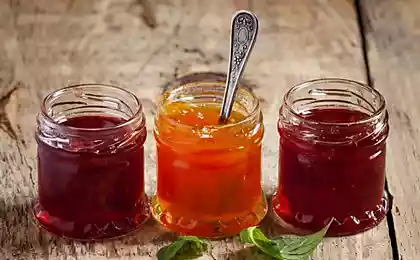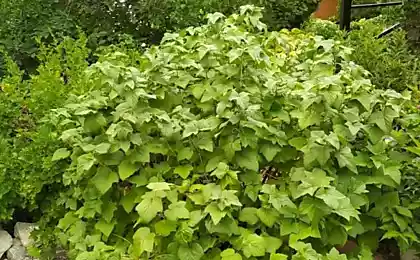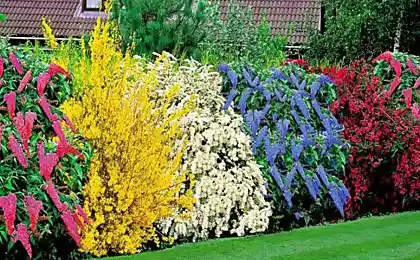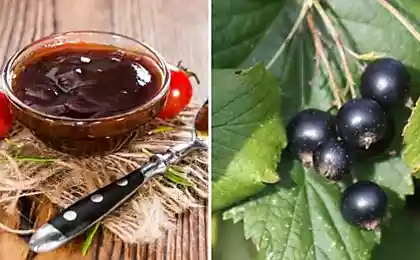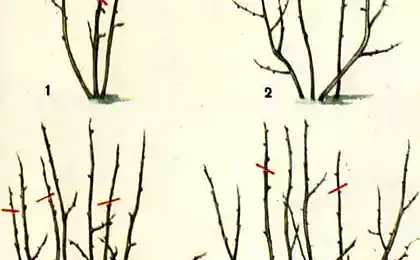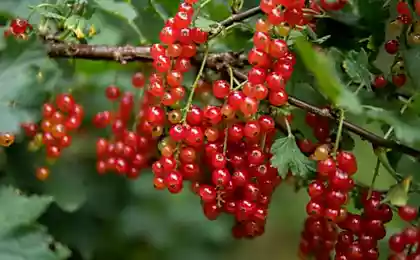501
Acasaguastlan - planting currants
A rich harvest, the health of the shrubs depends largely on the correct observance of agrotechnical measures, one of which is landing. Planting starts with selecting the place, so black currant prefers to grow in low, level areas, well lit and protected from the wind. Red currant prefers more open areas, it is less susceptible to the vagaries of wind and can grow in more upland areas. Red currant prefers light soils with significant fractions of sandy loam.
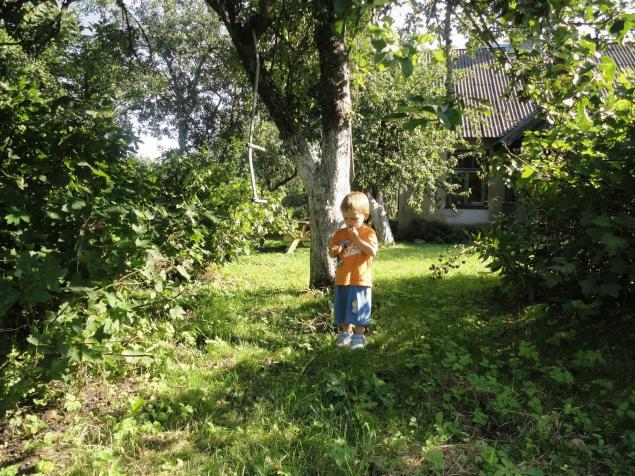
The choice of the place Before boarding also need to decide the layout of plant, it largely depends on the variety, from its power of growth. So, with strong, spreading crown cultivars – "Bagheera", "Belarusian sweet" and the like – you need to post less often, leaving not a half and two meters between plants, and more modest in size classes: the "Mystery", "Izmailovo" and others – can be planted and often by placing at a distance of 1-1,5 m from each other. After we decided on the layout, proceed to the landing – mark the area for digging individual holes or digging a common trench.
Our advice
In the spring implementation of planting material is very active, and many gardeners are attracted to new varieties of currants. However, we must remember that to plant black currants in the spring is necessary as soon as the soil is freed from snow cover and become suitable for excavation, that is soft. When planting in spring as in autumn, watering should be carried out and mulch the soil, because the spring sun is quite bright. Features posadnitsa all the currants are planted in the autumn, usually mid October or early November, in a prepared planting pits are dug according to the size of the root system, or trenches with a width of 40-50 cm and a depth of 40-45 cm And pits, and trenches, it is desirable to prepare in advance, in about 7-10 days before planting to allow the soil to settle. Digging pits or trenches, try the top layer of fertile soil to set them aside, it can then be mixed with fertilizer and cover with this mixture the seedling. Landing convenient to carry out this straightens the roots of the seedling in the planting hole and hold it inclined at an angle of 45 degrees, the other falls asleep the hole with soil and then condenses it. When planting a seedling currants it is necessary to periodically shake to the ground is completely filled megarave space without forming voids. Seedling can be a little sunk – approximately 6-8 cm above the root collar.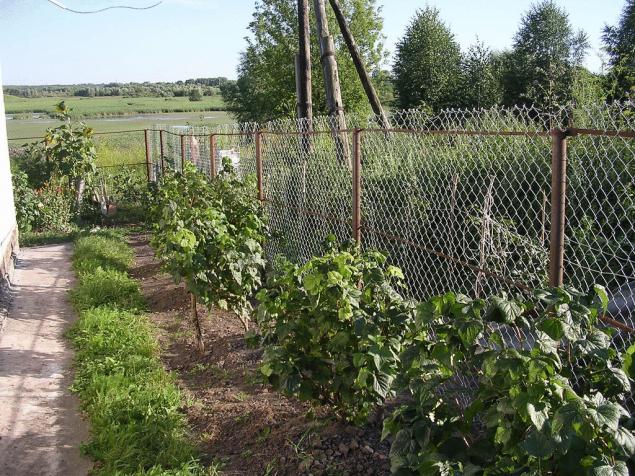
A sound approach
Inclined planting of seedlings is necessary in order to create more suitable conditions for rapid formation of extra root system of the seedling that will further stimulate the growth of new, young shoots that emerge from buds root collar. This will allow the plant to form a strong, healthy and well-developed shrub with necessary for a good harvest number of shoots.
If the plant is planted directly, it can lead to the formation of unsightly and reminiscent of the standard single-stemmed shrub, this technique is also used, but use it to form more intensive plantings of currants in large farms.

Our reference
Before planting, the chosen place must be put in proper condition: to align, to deeply dig the soil, make fertilizer, you can use wood ash as a substitute for potash.
In the planting hole usually add about 2-3 kg of compost, 70-80 g of superphosphate and 30 g of potassium or wood ash. Remember that fertilizer in its pure form to make not recommended, they should not come into contact with plant roots, it can cause very severe burns to tissues.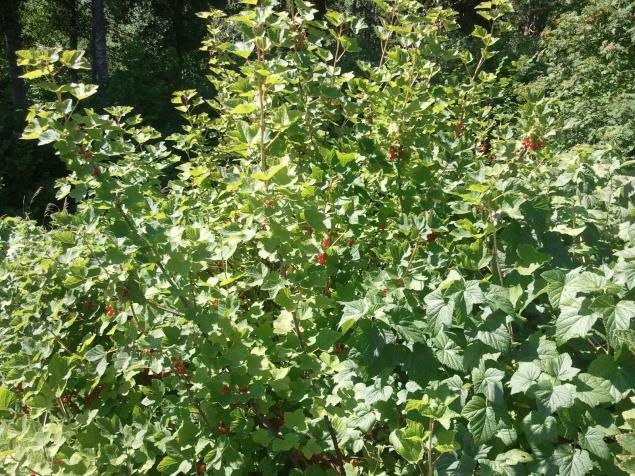
Watering
After planting and compaction of soil is watering the plants 7 to 8 liters of water under a Bush is enough. In dry weather that sometimes occurs in this period, you must wait until it is absorbed all the moisture and water the plant the same amount of water again.
After the moisture is completely absorbed, it is necessary to mulch the soil, this will retain maximum moisture and prevent its evaporation. As the mulch material is often used peat or humus, and the planting of large amounts of currant just sprinkle moist soil, dry land. After the implementation of all these procedures, currants cut off, leaving on the surface the pace with 2-3 buds each, it is necessary for the formation of a full and well-developed Bush.
Psedimentary material
Finally I want to tell about the planting material, because of its quality depends on your future harvest. As for the currants, then when you select the sapling you need to pay more attention to the assessment of the condition of the root system, it should be fairly well developed, undamaged – calving cliffs. A full seedling should have about 4-5 of skeletal roots of length up to 20-25 cm on slightly yellowed bark. You can check the plant for disease, to examine the kidneys, they should be elongated, small, pinkish or pale green color.
Swollen, rounded buds on the sapling can be a reason for the presence of Bud mite, quite a dangerous pest. Allowed and the cut part of the shoot when buying seedlings, the very core of his on the cut should be clean, white or light green color. If, after making the cut, you find a blackened, then most likely, it is a sign of another dangerous pest – Steklyannyy.
Source: www.ldacha.ru

The choice of the place Before boarding also need to decide the layout of plant, it largely depends on the variety, from its power of growth. So, with strong, spreading crown cultivars – "Bagheera", "Belarusian sweet" and the like – you need to post less often, leaving not a half and two meters between plants, and more modest in size classes: the "Mystery", "Izmailovo" and others – can be planted and often by placing at a distance of 1-1,5 m from each other. After we decided on the layout, proceed to the landing – mark the area for digging individual holes or digging a common trench.

Our advice
In the spring implementation of planting material is very active, and many gardeners are attracted to new varieties of currants. However, we must remember that to plant black currants in the spring is necessary as soon as the soil is freed from snow cover and become suitable for excavation, that is soft. When planting in spring as in autumn, watering should be carried out and mulch the soil, because the spring sun is quite bright. Features posadnitsa all the currants are planted in the autumn, usually mid October or early November, in a prepared planting pits are dug according to the size of the root system, or trenches with a width of 40-50 cm and a depth of 40-45 cm And pits, and trenches, it is desirable to prepare in advance, in about 7-10 days before planting to allow the soil to settle. Digging pits or trenches, try the top layer of fertile soil to set them aside, it can then be mixed with fertilizer and cover with this mixture the seedling. Landing convenient to carry out this straightens the roots of the seedling in the planting hole and hold it inclined at an angle of 45 degrees, the other falls asleep the hole with soil and then condenses it. When planting a seedling currants it is necessary to periodically shake to the ground is completely filled megarave space without forming voids. Seedling can be a little sunk – approximately 6-8 cm above the root collar.

A sound approach
Inclined planting of seedlings is necessary in order to create more suitable conditions for rapid formation of extra root system of the seedling that will further stimulate the growth of new, young shoots that emerge from buds root collar. This will allow the plant to form a strong, healthy and well-developed shrub with necessary for a good harvest number of shoots.
If the plant is planted directly, it can lead to the formation of unsightly and reminiscent of the standard single-stemmed shrub, this technique is also used, but use it to form more intensive plantings of currants in large farms.

Our reference
Before planting, the chosen place must be put in proper condition: to align, to deeply dig the soil, make fertilizer, you can use wood ash as a substitute for potash.
In the planting hole usually add about 2-3 kg of compost, 70-80 g of superphosphate and 30 g of potassium or wood ash. Remember that fertilizer in its pure form to make not recommended, they should not come into contact with plant roots, it can cause very severe burns to tissues.

Watering
After planting and compaction of soil is watering the plants 7 to 8 liters of water under a Bush is enough. In dry weather that sometimes occurs in this period, you must wait until it is absorbed all the moisture and water the plant the same amount of water again.
After the moisture is completely absorbed, it is necessary to mulch the soil, this will retain maximum moisture and prevent its evaporation. As the mulch material is often used peat or humus, and the planting of large amounts of currant just sprinkle moist soil, dry land. After the implementation of all these procedures, currants cut off, leaving on the surface the pace with 2-3 buds each, it is necessary for the formation of a full and well-developed Bush.
Psedimentary material
Finally I want to tell about the planting material, because of its quality depends on your future harvest. As for the currants, then when you select the sapling you need to pay more attention to the assessment of the condition of the root system, it should be fairly well developed, undamaged – calving cliffs. A full seedling should have about 4-5 of skeletal roots of length up to 20-25 cm on slightly yellowed bark. You can check the plant for disease, to examine the kidneys, they should be elongated, small, pinkish or pale green color.
Swollen, rounded buds on the sapling can be a reason for the presence of Bud mite, quite a dangerous pest. Allowed and the cut part of the shoot when buying seedlings, the very core of his on the cut should be clean, white or light green color. If, after making the cut, you find a blackened, then most likely, it is a sign of another dangerous pest – Steklyannyy.
Source: www.ldacha.ru

